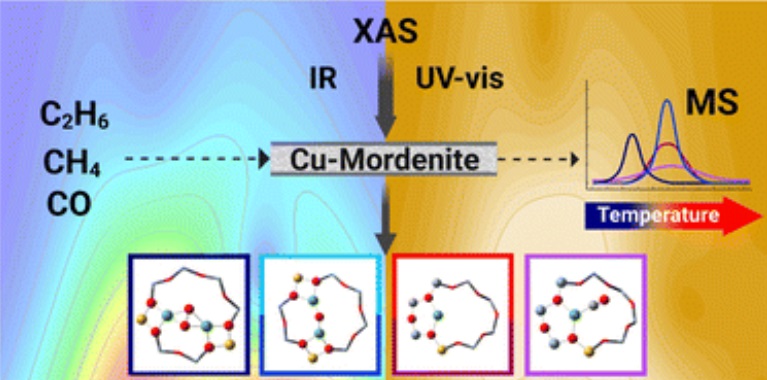Chemical Science – Karoline Kvande, Beatrice Garetto, Gabriele Deplano, Matteo Signorile, Bjorn Gading Solemsli, Sebastian Prodinger, Unni Olsbye, Pablo Beato, Silvia Bordiga, Stian Svelle and Elisa Borfecchia.

The direct activation of methane to methanol (MTM) proceeds through a chemical-looping process over Cu-oxo sites in zeolites. Herein, we extend the overall understanding of oxidation reactions over metal-oxo sites and C–H activation reactions by pinpointing the evolution of Cu species during reduction. To do so, a set of temperature-programmed reduction experiments were performed with CH4, C2H6, and CO. With a temperature ramp, the Cu reduction could be accelerated to detect changes in Cu speciation that are normally not detected due to the slow CH4 adsorption/interaction during MTM (∼200 °C). To follow the Cu-speciation with the three reductants, X-ray absorption spectroscopy (XAS), UV-vis and FT-IR spectroscopy were applied. Multivariate curve resolution alternating least-square (MCR-ALS) analysis was used to resolve the time-dependent concentration profiles of pure Cu components in the X-ray absorption near edge structure (XANES) spectra. Within the large datasets, as many as six different CuII and CuI components were found. Close correlations were found between the XANES-derived CuII to CuI reduction, CH4 consumption, and CO2 production. A reducibility–activity relationship was also observed for the Cu-MOR zeolites. Extended X-ray absorption fine structure (EXAFS) spectra for the pure Cu components were furthermore obtained with MCR-ALS analysis. With wavelet transform (WT) analysis of the EXAFS spectra, we were able to resolve the atomic speciation at different radial distances from Cu (up to about 4 Å). These results indicate that all the CuII components consist of multimeric CuII-oxo sites, albeit with different Cu–Cu distances.
Click here for the complete article!